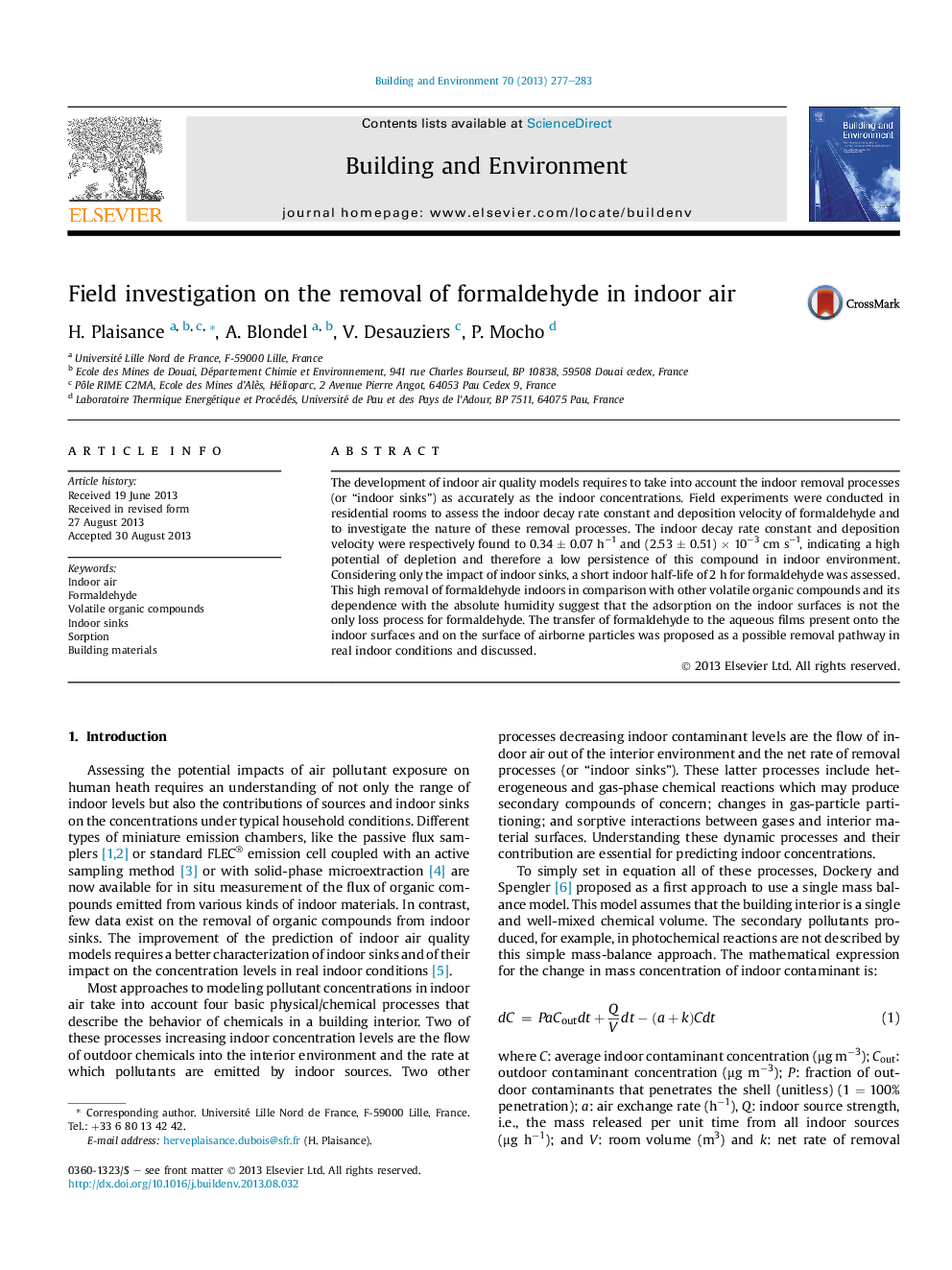| Article ID | Journal | Published Year | Pages | File Type |
|---|---|---|---|---|
| 6700864 | Building and Environment | 2013 | 7 Pages |
Abstract
The development of indoor air quality models requires to take into account the indoor removal processes (or “indoor sinks”) as accurately as the indoor concentrations. Field experiments were conducted in residential rooms to assess the indoor decay rate constant and deposition velocity of formaldehyde and to investigate the nature of these removal processes. The indoor decay rate constant and deposition velocity were respectively found to 0.34 ± 0.07 hâ1 and (2.53 ± 0.51) Ã 10â3 cm sâ1, indicating a high potential of depletion and therefore a low persistence of this compound in indoor environment. Considering only the impact of indoor sinks, a short indoor half-life of 2 h for formaldehyde was assessed. This high removal of formaldehyde indoors in comparison with other volatile organic compounds and its dependence with the absolute humidity suggest that the adsorption on the indoor surfaces is not the only loss process for formaldehyde. The transfer of formaldehyde to the aqueous films present onto the indoor surfaces and on the surface of airborne particles was proposed as a possible removal pathway in real indoor conditions and discussed.
Related Topics
Physical Sciences and Engineering
Energy
Renewable Energy, Sustainability and the Environment
Authors
H. Plaisance, A. Blondel, V. Desauziers, P. Mocho,
